
Dearq
Scope & Guideline
Championing Open Access for Progressive Research
Introduction
Aims and Scopes
- Contextual and Cultural Architecture:
The journal emphasizes the significance of cultural contexts in architecture, exploring how local traditions, histories, and social dynamics influence design practices. - Sustainable Urban Practices:
There is a strong focus on sustainable and circular approaches to urbanism, investigating how architectural interventions can extend the life cycles of structures and promote ecological responsibility. - Decolonization and Identity in Architecture:
"Dearq" delves into themes of decolonization, examining how architecture can reflect and challenge colonial legacies while promoting new identities and narratives. - Community Engagement and Participatory Design:
The journal prioritizes participatory approaches in architecture, highlighting the role of communities in shaping their environments through collaborative practices. - Innovative Methodologies in Architectural Research:
A commitment to exploring new research methodologies, including qualitative approaches and interdisciplinary studies, to address complex architectural and urban challenges.
Trending and Emerging
- Ephemeral and Adaptive Architecture:
Recent publications highlight the importance of ephemeral structures and adaptive reuse, reflecting a growing interest in flexible design solutions that respond to temporary needs and changing contexts. - Community-Centric Urbanism:
There is a rising trend towards community-centric approaches in urbanism, emphasizing the role of local populations in shaping their urban environments and advocating for inclusive planning processes. - Interdisciplinary Approaches to Urban Challenges:
The journal increasingly engages with interdisciplinary methodologies, integrating insights from sociology, ecology, and cultural studies to address complex urban issues. - Responses to Climate Change in Architecture:
A significant focus on climate-responsive design strategies is evident, with publications exploring how architecture can mitigate environmental impacts and promote sustainability. - Cultural and Political Dimensions of Space:
Emerging themes examine the cultural and political implications of architectural spaces, particularly in terms of identity, power dynamics, and social justice.
Declining or Waning
- Traditional Architectural Histories:
There appears to be a waning interest in conventional architectural histories that rely solely on canonical figures and styles, as the journal shifts towards more critical and inclusive narratives. - Static and Singular Architectural Solutions:
The journal has moved away from promoting static architectural solutions, favoring dynamic and adaptable designs that respond to changing social and environmental conditions. - Focus on Pure Aesthetics:
There is a noticeable decline in discussions centered around aesthetic considerations in isolation; instead, the emphasis has shifted towards the functionality and social implications of architectural design. - Regionalism Without Contextualization:
While regionalism was once a focus, there is now a trend towards a more global and interconnected understanding of architecture that transcends purely regional approaches.
Similar Journals

Contexto-Revista de la Facultad de Arquitectura Universidad Autonoma de Nuevo Leon
Shaping Contemporary Narratives in ArchitectureContexto-Revista de la Facultad de Arquitectura Universidad Autonoma de Nuevo Leon is a prominent open-access journal published by the Universidad Autonoma de Nuevo Leon, Faculty of Architecture, dedicated to the fields of architecture, urban studies, and visual arts. Since its establishment, the journal has steadily contributed to the discourse in these interconnected domains, particularly given its commitment to open access since 2011, allowing for wider dissemination of knowledge and research. With its ISSN 2007-1639, Contexto has evolved to encompass a range of topics pertinent to contemporary architectural practices and urban development trends, reflecting its vision to foster innovative dialogues and critical analyses among researchers, practitioners, and students. With a current Scopus ranking showcasing its influence—specifically a Q4 classification in Architecture and Urban Studies, and a Q2 in Visual Arts and Performing Arts—this journal serves as a vital resource for academia and industry alike. Authors and readers are encouraged to engage with its dynamic content and contribute to its ongoing mission of enriching the architectural and urban narratives within Mexico and beyond.
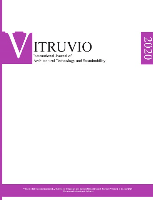
VITRUVIO-International Journal of Architectural Technology and Sustainability
Fostering collaboration for a sustainable built environment.Welcome to the VITRUVIO-International Journal of Architectural Technology and Sustainability, a leading open-access journal published by UNIV POLITECNICA VALENCIA, EDITORIAL UPV since 2015 and based in Spain. With its ISSN 2444-9091, this journal is dedicated to advancing the field of architectural technology and sustainability, providing a vital platform for researchers, professionals, and students alike. The journal has made significant strides in the academic landscape, achieving a Q3 ranking in Architecture and a Q4 ranking in Building and Construction for 2023. It features a diverse range of scholarly articles that explore innovative practices, cutting-edge research, and sustainable solutions in architecture. With a Scopus ranking placing it at #70/189 in Architecture and #161/223 in Building and Construction, it is positioned within the 63rd percentile and 28th percentile respectively, demonstrating its increasing impact in these vital fields. We invite you to engage with our content and contribute to the ongoing discourse around sustainability in architectural practice.
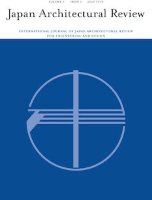
Japan Architectural Review
Advancing architectural innovation for a sustainable future.Japan Architectural Review is a premier open-access journal published by WILEY, dedicated to advancing the fields of architecture, environmental engineering, and modeling and simulation. Since its inception, this journal has emerged as a critical platform for disseminating innovative research, offering insights into the latest trends and challenges facing the built environment and sustainability practices. With an impact factor reflecting its growing influence, especially in the Q2 category of Architecture and notable rankings in environmental engineering and modeling disciplines, it serves as an essential resource for researchers, professionals, and students alike. The journal's commitment to open access since 2018 has further enhanced its reach, making high-quality research accessible to a global audience. Spanning an important timeline from 2019 to 2024, the Japan Architectural Review facilitates a collaborative discourse among scholars, encouraging innovative solutions to contemporary architectural challenges.

i2 Investigacion e Innovacion en Arquitectura y Territorio
Cultivating innovative practices in architecture and geography.i2 Investigacion e Innovacion en Arquitectura y Territorio is a leading open-access journal published by the University of Alicante, dedicated to advancing research and innovation in the fields of architecture and territorial development. Since its inception in 2013, this journal has aimed to provide a robust platform for scholarly discourse, promoting interdisciplinary approaches that connect academic insights with practical applications in urban planning and environmental design. With its commitment to accessibility, the journal ensures that cutting-edge findings and case studies are readily available to researchers, professionals, and students alike, fostering collaboration and informed decision-making. As the landscape of architecture and geography continues to evolve, the i2 journal stands out as a crucial resource for enhancing knowledge and cultivating innovative practices in these dynamic fields.
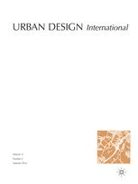
Urban Design International
Advancing knowledge in sustainable urban design.Urban Design International, published by Palgrave Macmillan Ltd, stands as a pivotal journal in the fields of Urban Studies and Geography, Planning and Development. Since its inception in 1996, this UK-based journal has become a leading platform for innovative research and discourse, maintaining a Q1 classification in Urban Studies and a Q2 ranking in Geography, Planning and Development as of 2023. With an impressive Scopus ranking of 48 out of 279 in Urban Studies, the journal's contributions are recognized globally, evidenced by its 82nd percentile standing. While currently not an open-access publication, it provides a vital resource for academics, urban planners, and policymakers engaging with the complexities of urban environments. With an aim to foster interdisciplinary collaboration and critical analysis of urban design practices, Urban Design International is committed to pushing the boundaries of knowledge in sustainable urban development and design.
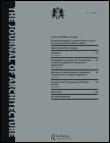
Journal of Architecture
Fostering interdisciplinary dialogue for a sustainable built environment.Journal of Architecture, published by ROUTLEDGE JOURNALS, TAYLOR & FRANCIS LTD, stands as a pivotal platform for scholarly discourse in the ever-evolving field of architecture. Established in 1996, this esteemed journal boasts an impressive impact factor, categorized as Q2 in Architecture and Q1 in Visual Arts and Performing Arts, reflecting its significant contribution to both disciplines. With a robust Scopus ranking positioning it in the 85th percentile among Visual Arts and Performing Arts and the 57th percentile within Engineering Architecture, the journal serves as an essential resource for researchers, professionals, and students alike. The Journal of Architecture features innovative research and thoughtful analysis that shape contemporary architectural practices and theories, encouraging interdisciplinary dialogue. Engaging with this journal allows readers to stay abreast of critical advancements and emerging trends, fostering a deeper understanding of architecture's role in societal transformation.

LOTUS INTERNATIONAL
Illuminating the Path of Creative PracticesLOTUS INTERNATIONAL is a distinguished journal published by EDITORIALE LOTUS, focusing on the dynamic fields of Architecture and Visual Arts and Performing Arts. With its ISSN 1124-9064, this scholarly periodical has been a platform for innovative research and discourse since its inception in 2002, resuming publication in 2021 after a brief hiatus. Based in the cultural hub of Milan, Italy, LOTUS INTERNATIONAL aims to bridge theoretical frameworks and practical applications, thereby fostering a deeper understanding of creative practices and their implications in modern society. As a Q4 ranked journal in its respective categories for 2023, it provides a unique opportunity for researchers and professionals to contribute to an evolving dialogue, even at the foundational percentile levels within its Scopus rankings. Although not an open-access journal, LOTUS INTERNATIONAL remains committed to disseminating valuable insights and advancing knowledge in the creative disciplines. With an accessible format, it invites a diverse audience, including students, to engage with emerging concepts that shape the future of art and architecture.

Interiors-Design Architecture Culture
Bridging Disciplines: Where Design Meets Cultural NarrativesInteriors - Design Architecture Culture is a prominent academic journal dedicated to exploring the multi-dimensional relationship between interiors, design, and architecture, while also emphasizing their cultural significance. Published by Routledge Journals, Taylor & Francis Ltd, this journal serves as an essential platform for innovative research in the fields of architecture, cultural studies, and visual arts. The journal, which has been disseminating vital findings since its inception in 2010, plays a crucial role in fostering interdisciplinary discourse, and it currently holds a Q4 rank in Architecture and Cultural Studies, alongside a Q3 rank in Visual Arts and Performing Arts. Though it operates under a traditional access model, the journal's rigorously peer-reviewed articles are vital for researchers, professionals, and students alike, contributing to an enriched understanding of how interior spaces shape, and are shaped by, cultural dynamics. With an ISSN of 2041-9112 and E-ISSN of 2041-9120, the journal continues to make significant contributions to the academic discourse surrounding the design and cultural narratives of interior spaces.

Archnet-IJAR International Journal of Architectural Research
Fostering collaboration in the global architectural community.Archnet-IJAR International Journal of Architectural Research serves as an esteemed platform within the field of architecture and urban studies, published by Emerald Group Publishing Ltd. With an impressive impact reflected through its Q1 category rankings in both Architecture and Urban Studies, this journal highlights cutting-edge research and innovative practices spanning diverse architectural disciplines. The journal focuses on facilitating interdisciplinary dialogues, making it a vital resource for researchers, students, and professionals keen on advancing their understanding of architectural theories and urban design. With its commitment to quality, evidenced by high scores in various Scopus rankings, including a rank of 9th in Visual Arts and Performing Arts, Archnet-IJAR aims to publish work that not only challenges conventional boundaries but also enriches practical applications in the built environment. Its open-access model ensures wider dissemination of knowledge, fostering collaboration and growth within the international architectural community.
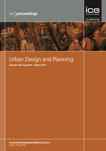
Proceedings of the Institution of Civil Engineers-Urban Design and Planning
Pioneering Research for Dynamic Urban EnvironmentsProceedings of the Institution of Civil Engineers-Urban Design and Planning is a leading scholarly journal published by EMERALD GROUP PUBLISHING LTD, dedicated to advancing knowledge and innovation in the fields of urban design and planning. With an ISSN of 1755-0793 and E-ISSN 1755-0807, this journal serves as a vital platform for researchers, professionals, and students to disseminate impactful studies and findings. It boasts impressive rankings, including Q1 in Architecture and notable positions in Civil and Structural Engineering and Urban Studies, underscoring its significance in the academic community. The journal's scope encompasses a diverse array of topics relevant to urban environments, encouraging interdisciplinary dialogue and exploration. Although it operates under traditional access, its contributions are invaluable, reflecting the latest developments and challenges within urban planning practices. Published regularly since 2009, the Proceedings of the Institution of Civil Engineers-Urban Design and Planning is vital for those seeking to enhance their understanding of sustainable urban development and design methodologies, making it a critical resource in its fields of study.